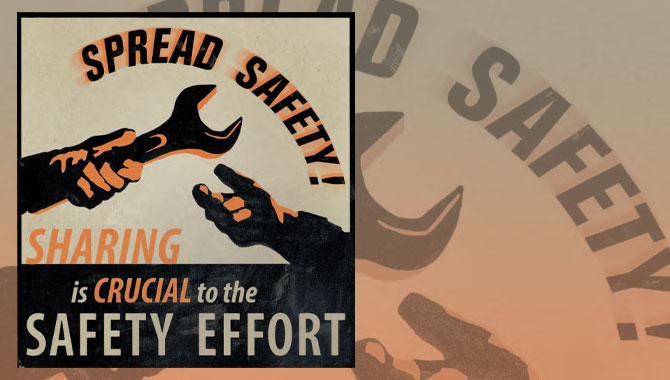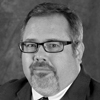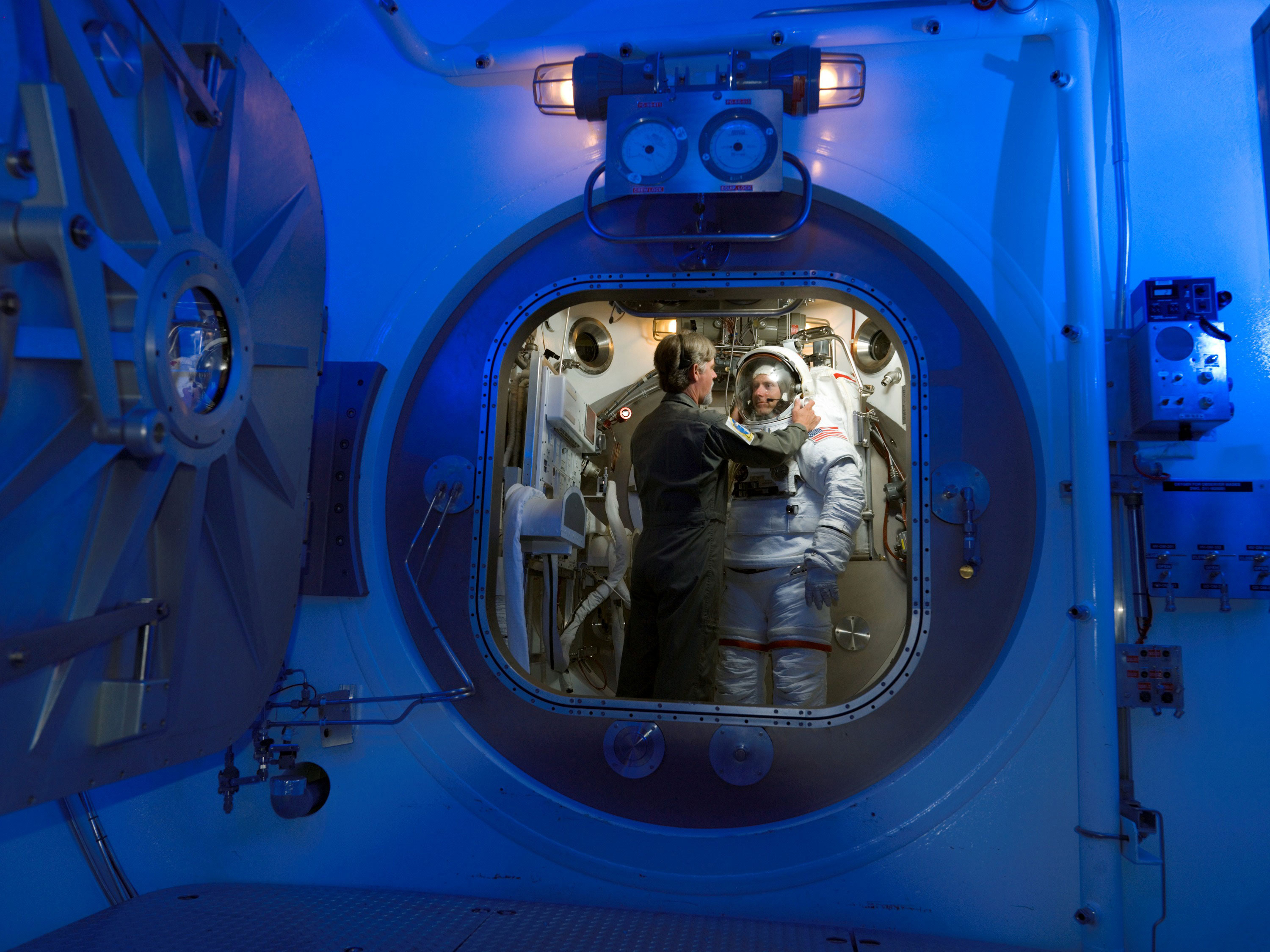
By Mike Lipka
Safety Day is an annual event held at every NASA center and facility. It is a crucial component of the agency’s forward-looking mishap-prevention effort. No two Safety Day events are exactly alike. Each center plans and implements its activities independently. That allows the local Safety Day teams to address the issues that matter most to their individual centers, but it also means that they may be unaware of potentially valuable approaches taken by other centers.
“The welfare of each of us is dependent fundamentally upon the welfare of all of us.”
— President Theodore Roosevelt, New York State Fair, Syracuse, NY, September 7, 1903
NASA faces the same problem that all large organizations with multiple geographic locations face: keeping current on innovations and new ideas developed elsewhere in the organization. We all “play for the same team,” but it is not easy to see what everyone else at the agency is doing. A collaborative approach allows NASA centers’ Safety Day planning teams to spend a minimal amount of time to gain the maximum amount of wisdom and experience from their peers.
In my role at the NASA Safety Center (NSC), I focus on developing knowledge-sharing opportunities within the agency’s Safety and Mission Assurance (SMA) community. The NSC was formed in 2006 as part of the Office of Safety and Mission Assurance. It focuses on improving the development of personnel, processes, and tools needed for the safe and successful achievement of NASA’s strategic goals.
Sharing Ideas
Last year, I launched an effort to determine what kind of help SMA directors were looking for to make their Safety Day more successful. I contacted the directors and Safety Day team members at every NASA center and facility to get their perspectives. In addition to basic questions on budgets, logistics, and management support, I wanted to hear about their willingness to share their Safety Day ideas and content with other centers.
One of the NSC’s functions is to be a knowledge “broker” for the rest of NASA. My team and I are looking at what has worked best in the past and trying to make those practices available to every center. We want to develop an awareness of what others are doing to share good ideas and create some efficiencies—sharing ideas and content can save money.
I began the interviews by asking two questions: “Would your center be interested in how other NASA centers approach their Safety Day?” and “Would you share your center’s success stories with the other NASA centers?”
“The response was unanimous,” says NSC Director Alan H. Phillips. “Everyone answered, ‘yes.’”
Once we understood that center SMA offices were interested in learning more about Safety Day activities of other centers and sharing their own approaches, it was full speed ahead. “This was an opportunity for the NSC to bring the centers together to work toward common issues related to their Safety Day events,” Phillips added.
Reviewing my discussions with the SMA directors and planning teams, I found three common themes regarding the challenges that NASA centers and facilities face when planning and executing Safety Day events:
- Developing a Safety Day event in the face of shrinking budgets
- Keeping center personnel interested in safety issues
- Managing the time that center SMA staff spend working on Safety Day events
My interview process led to a virtual Safety Day planning meeting in December 2012 that involved representatives from nearly every NASA center and facility. Approximately twenty people participated in the discussion. The purpose was to get people to discuss how they planned, promoted, and staged their centers’ Safety Day activities. They were asked to explain both what they do and how they get things done. I asked center representatives for their Safety Day “wish lists.” Responses included higher budgets, meaningful activities, more hands-on events, and involvement from others at the center. While we can’t increase their budgets, we can give them some ideas on how to stretch their dollars. The goal is to make Safety Day an engaging and meaningful event at each NASA center. We want to raise awareness of safety issues, and we also want to leverage the centers’ resources so everyone gets the most out of their investment in time and money.
Safety Day Stories
We kicked off the meeting by reviewing the common challenges identified in individual discussions. We then began to address planning requirements of Safety Day events. I felt it was important that the centers’ Safety Day planning teams hear directly how their colleagues solve problems. Person-to-person interaction has more meaning and impact than reading a list of best practices, and it provides opportunities to ask detailed questions of the people who have successfully planned and executed Safety Day events.
We started each discussion by having a participant tell a story that encapsulated what they did and how they did it to provide context. The storytelling approach has an iterative effect, triggering others to respond with their own stories, building new understanding. After each story is told, other participants follow up with their own experiences.
One story described the creative use of bartering to attract an interesting and knowledgeable speaker despite a limited or non-existing budget. In 2012, Kennedy Space Center invited the National Football League’s medical director to speak about concussion safety. Instead of a speaker’s fee, he was given a personal tour of the space center, which he greatly enjoyed. After this experience was shared, a participant from Glenn Research Center told how they got a representative from the Cleveland Clinic to speak at their Safety Day event by providing a tour of the center and offering to present at a Cleveland Clinic safety and health event in the future.
Wider Sharing
The centers’ input has been included in a Safety Day Planning Guidebook that is available from the NSC. The guidebook is descriptive, not prescriptive. It is not intended to be instructions on the proper way to conduct a Safety Day at NASA. It presents what has worked at different centers and shows what attendees think is most useful.
Another result of the planning effort was the formation of a Safety Day community of practice on the NSC Knowledge Now collaboration tool to exchange Safety Day knowledge and experiences year-round.
During the meeting, I let the centers know that the NSC offers safety information campaigns that can be used for Safety Day. We have materials on electrical safety, ladder safety, transportation safety, and more. Centers can download videos, posters, and brochures directly from the NSC web site whenever they need to. The centers can use those materials as is or tailor them to fit their own plans.
All these efforts are designed to give people who are separated geographically but work on the same issues opportunities to share. If someone knows of a guest speaker who is interesting and has a great safety message, that person should let the other centers know about it. If unique games and interactive exercises have made learning more fun and memorable at one center, it’s important to spread the word.
I presented what has been accomplished so far at the annual Safety Directors and Occupational Health Managers meeting in March 2013 at Kennedy. I also plan to hold virtual checkpoint meetings each June and December to continue discussions on the progress of Safety Day planning.
For more information on planning center Safety Day, contact the author at 440-962-3172 or michael.j.lipka@nasa.gov.
Related Links
About the Author
 |
Mike Lipka is the knowledge management officer for the Safety and Mission Assurance organization, responsible for the design and implementation of knowledge management programs. As a member of the NASA Safety Center, his work is focused on knowledge strategy and needs assessment, developing communities of practice, and facilitating knowledge-sharing opportunities. |








